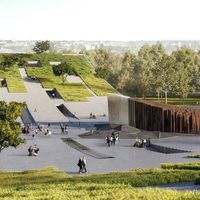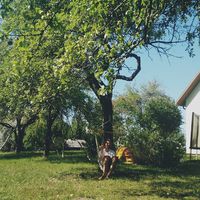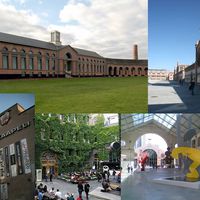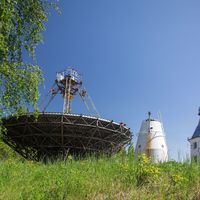Riga, at the heart of Latvian arts & culture
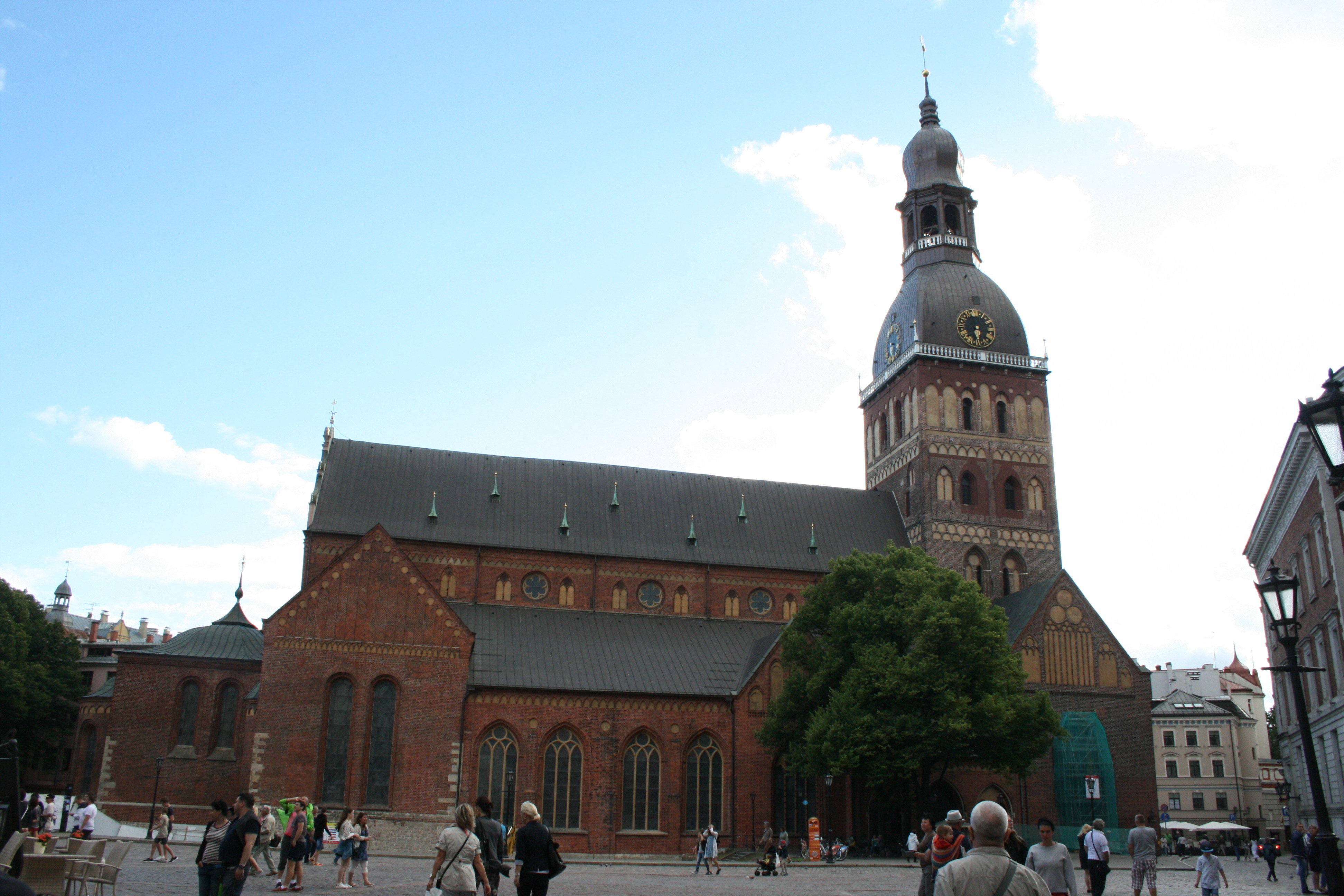
In conjunction with the celebrations for the 100th anniversary of Latvia, culture360 contributor Florent Petit takes us to Riga, to discover its vibrant arts scene.
A capital a stone throw from the shores of the Baltic; a coastal city filled with history; a small-sized urban environment along the Daugava River, a multicultural and multilingual city sheltering Russian, Ukrainian and Polish communities. If we had to tag the Latvian capital, these definitions could all perfectly fit Riga.
A vivid, diverse and rich architectural heritage
Riga is an open book of architectural history. The city’s heart is an impressive mix of different architectural styles, from the Middle Ages to Renaissance and Modern Times, underlying the rich history of a city once member of the Hanseatic League. In the second half of the 19th century, its growth led to a major shift in Riga’s urban layout, giving it its current structure. Its economy is booming, its population growing; the medieval fortress walls are converted into public parks. At the turn of the 20th century, its urbanization led to the construction of entire blocks of Jugenstil / Art Nouveau housings that characterises up to this day the physiognomy of the city. Riga is without a doubt an open-air museum and one of the most valuably preserved heritage cities in Europe.
This Art Nouveau heritage, one of the finest on the continent, forms today a key feature of Riga’s urban planning. It is part of the UNESCO World Heritage list and of the Art nouveau European Route repertory funded by the European Union. Some of the most striking examples of this architectural style can be found on the famous axes of Alberta iela and Elizebetes iela, located north of the historical centre. The Riga Art Nouveau Centre (Riga Jugenstila Centrs) has been founded in 2006 to support the scientific research and preservation of Art Nouveau architecture, art and design (noticeably through a remarkable online repertory of buildings gathering photos, maps, architectural surveys and other types of documentation) and to develop the recognition of this heritage throughout Latvia and abroad.
Creative initiatives to boost and energize urban and social tissue
Beyond this image, Riga’s architectural heritage is indeed plural and diverse, and innovative solutions and new strategies were set in place to revitalize entire districts far from the city centre, as it is the case for the following 2 initiatives.
Located by the shore of the Daugava River, just South of the city centre and near the impressive Central Market, the Spikeri creative district is one of the first initiatives launched locally to “get back to life” old and derelict areas through the leverage effect creative industries can produce.
Spikeri is a former warehouses’ district mostly developed in the years 1860-1880 and now turned into a cultural and educational neighbourhood open to both locals and tourists. Several blocks were renovated and surrounded by an entirely pedestrian area equipped with a bikeway, children playgrounds and a riverside promenade along the Daugava River. The warehouses now shelter a theatre and a concert hall, the memorable Latvian Holocaust Museum, offices for cultural and creative industries agencies as well as restaurants and shops. Spikeri also welcomes a wide range of events such as a flea market and several others.
The other relevant initiative by the local community to revitalize its urban environment can be found on the other bank of the Daugava River, in the more residential district of Kalnciema. This side of town showcases traditional wooden houses. The master plan to revitalize the area started at the beginning of the year 2000 with the renovation of several end of 19th century houses with traditional materials and savoir-faire, to ensure their preservation. The overall restoration of the district was undergone with the aim to ensure a wide public access to the areas. The place is now the home of a renowned traditional farmers’ and artisans’ market held every week, which makes the area very vibrant. It is completed with a programme of thematic markets organized also on a weekly base. Cultural events such as open-air concerts and screenings, exhibitions and street food festivals are also organized. Another striking feature is the foundation of the Wooden Architecture Centre, opened in 2016 and specializing in renovation and long-term maintenance of wooden architecture, through the organization of workshops and internships.

A network of museums
Riga takes also pride in offering one of most dynamic network of art museums in Northern Europe. Under the umbrella organization of the Latvian National Museum of Art, several noteworthy institutions are making Riga one of the brightest spots on the European museum scene. Most of the institutions featured are interesting examples of the ways that architectural heritage can be turned into innovative museums showcasing diverse collections.
The Latvian National Museum of Art, located downtown in the leafy environment of Esplanade park, has been undergoing major renovation work to reopen in spring 2016. This early 20th century purpose-built monument was enlarged on this occasion to showcase an extensive collection of Latvian visual arts, on various medium (paper, paintings, sculptures) with 2 new floors under the park to provide new exhibitions spaces and facilities for collection management, with the possibility for visitors to get a glimpse of the storage rooms.
The Art Museum Riga Bourse is also located downtown and features one of the best collections of Fine Arts in the country. The collection was relocated from the Riga Castle after major reconstruction and restoration work undertaken from 2008 to 2011 to turn the former Stock Exchange building into a cutting-edge home for art works. An Oriental Gallery for works coming from Europe and beyond was also added.
The Museum of Decorative Arts and Design opened in 1989 in the former St Georges Church building, which is one the oldest stone building in Riga. A permanent exhibition highlights the creativity of Latvian designers and craftsmen over a period of almost 2 centuries through various materials such as glass, ceramics, wood, leather or metal. The museum carries out a wide range of activities to sustain the flourishing of contemporary Latvian design trends: besides design talks organized for professionals as well as young audiences, the museum organized for the second time in 2018, the National Design Award of Latvia, exhibiting the work of 20 finalists. The museum has a noticeable international activity with the organization of Riga’s International Textile and Fibre Art Triennale, whose 6th edition took place last summer. The Triennale aims to present the most innovative trends in the field of textile and fibre art in Europe and the world.
Also, interesting to bear in mind is Arsenals, which, as its names suggests, is a former customs warehouse build in early 19th century and located within the city centre, close by the Riga Castle. The place showcases temporary exhibitions from Latvian and international contemporary artists, but a major redevelopment plan aims, after restoration work, to turn the venue into a permanent gallery dedicated to the presentation of the national collection of Latvian art from the second half of 20th century.
The museum scene in Riga is looking ahead to the future with development projects seeking to gain wider audiences and ways of presenting their national collections.
A nest for alternative culture
Along with these landmark institutions, Riga’s vibrant cultural scene relies on several alternative structures and art spaces, such as the KIM? Contemporary Art Centre. Founded in 2009 and presenting exhibitions, conferences and lectures, KIM? (abbreviation of the question of What is Art? “Kar Ir Maksla?” in Latvian) also has an intense research activity, through the publication of essays and texts on art, artistic theory and criticism. The place is currently hosting the 3rd chapter of the Baltic Triennial of contemporary art, closing the event after the presentation of chapters 1 and 2 in Vilnius (Lithuania) and Tallinn (Estonia) respectively.
Also noticeable is the Rixc Center for new media culture, an artists’ collective initiating projects at the crossroads of art, science and emerging technologies. The collective unfolds its activities through the management of two media art galleries, the production of art works, the organization of exhibitions and an annual Art & Science festival, with a special attention given to contemporary issues such as renewable energy, social changes or more recently, the question of global control through the rise of fake news in the media. Rixc has also launched this year a residency programme to welcome artists or researchers working with science and digital technologies.
Riga has its own Biennale of contemporary art, Riboca, with its 1st edition was held this year. Programmes were presented in 8 different venues in town and a short walking distance one from the other, allowing visitors to enjoy a urban promenade. The Biennale focuses on the Baltic Region and has set a vast public programme of events to attract audiences beyond the art world. The public programme has been created in close connection with local partners such as KIM? Art centre or the locally well-known Kanepes Kulturas Centrs. This centre offers in an informal atmosphere a diverse range of cultural activities and supports the emergence of young talents (artists, musicians and writers) but also stands for a place of recreation and entertainment. The centre is housed in a former building of the Art Academy of Latvia that was abandoned for some time.
Another reference of the contemporary art scene is the Latvian Centre for Contemporary Art (LCCA) which started its activities in 1993, devising and producing contemporary art events both in Latvia and abroad. The Centre represents Latvia at international events such as the Venice Biennale or the Koichi-Muziris Biennale. The most famous achievement of LCCA is its annual international contemporary art festival, Survival Kit, which 10th edition was held this year, questioning the broad concept of division between centre and periphery, with a geopolitical and cultural perspective, and a special attention to the issue of global migration.
One can appreciate the flourishing network of institutions the Latvian capital has today. The Culturemap Riga website is a wealth of information and a good compass to find your way in this dynamic art scene. It provides through a calendar, all information on exhibitions, screenings, performances, concerts, talks, festivals and other culture-oriented activities organised in the city.
Future projects
This lively art scene could soon gain even more visibility thanks to several large-scaled cultural projects.
An illustration of this is Zuzeum, a private museum founded by collectors Dina and Janis Zuzans, owning a renowned collection of Latvian Modern and contemporary art comprising over 5000 artefacts. The collection is now displayed amidst an industrial environment in a former factory located south-east of the Old town. A new step in the development of Zuzeum will bring the premises to a next level, turning the entire site into a vast art complex, with renovation works allowing to display massive pieces in a new contemporary building adjacent to the 1910 factory and a surrounding sculpture park open for visitors. The ambition of the project is to raise Latvia’s visibility on the world art scene.
In addition to this private initiative, another redevelopment project has been launched in the Skanste district, located in the Northern part of the capital. In this neighbourhood currently undergoing extended and intensive restructuring, the Latvian Museum of Contemporary Art is set to open its doors in November 2021. The building of the museum will be privately funded under the supervision of a specially created foundation in close collaboration with the Ministry of Culture. This public-private partnership aims to raise the visibility of Riga and the whole country on an international scale. The museum will present national collections and document the visual art culture of Latvia and the Baltic Sea region from the 60’s onwards. The museum claims to become a significant landmark of the city and aims to create a new artistic hub outside the city centre.
Riga, as well as many other cities in Europe and beyond includes its cultural activities as part of the ‘toolkit’ cities have and use to reconquer urban “waste land”, less attractive areas or so called “peripheral spaces”. Bustling cultural venues and artistic projects are acting like centrifugal forces to spread culture outside the traditional limits of city centre where well-established structures are normally concentrated. In line with this, Riga shows a strong development potential and a good sense of creativity to assert and consolidate its unique, peculiar place on the European cultural map.
- Riga Art Nouveau Centre : www.jugendstils.riga.lv
- Arsenals : http://www.lnmm.lv/en/aeh/
- The Art Museum Riga Bourse : http://www.lnmm.lv/en/mmrb/
- Latvian Museum of Contemporary Art : http://skanste.lv/en/infrastructure/culture-entertainment/laikmetigas-makslas-muzejs
- Latvian National Museum of Art : http://www.lnmm.lv/en/
- KIM ? Contemporary Art Centre : https://kim.lv/en/
- Latvian centre for contemporary art : https://lcca.lv/en/
- Spikeri Creative district : https://www.spikeri.lv/en/
- Riga Ghetto and Latvian Holocaust monument : http://www.rgm.lv/?lang=en
- Museum of Decorative Arts and Design : http://www.lnmm.lv/en/mdad/
- Kanepes cultur centre : http://www.kanepes.lv/en/
- Kalnciema Quarter : http://www.kalnciemaiela.lv/en/
- Culturemap Riga : http://www.culturemap.lv/
- Rixc center for new media culture : http://rixc.org/
- Riga International Biennial of contemporary art: https://rigabiennial.com/
- Zuzeum : https://www.zuzeum.com/
Similar content
01 Jun 2018
26 Nov 2016
14 Nov 2016
deadline
01 Nov 2019
deadline
15 Oct 2023


